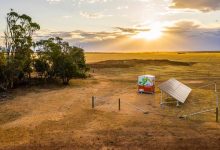The West Australia government has introduced significant reforms that will pave the way for more renewable-based stand-alone power system and distributed storage in the state, and allow for competition to be introduced into the various private and public networks in the Pilbara region of the north west.
The bill – the Electricity Industry Amendment Bill 2019, which passed through parliament this week– is designed to smooth the path for Western Power, the state’s main network supplier, to install stand-alone power systems for individuals, or as part of a bigger micro-grid, to lower the increasingly exorbitant cost of maintaining existing or building new power lines to remote customers.
Western Power has identified up to 15,000 customers that it could take off the grid by providing local renewable power combined with battery storage and back-up generation. And there are thousands more it believes it can serve with a “thin-wire”.
Several dozen customers have already been taken off the grid – with poles and wires removed and replaced with the stand alone power – to great success. And another 100 are schedule to have the same service delivered in the coming year. This new bill will allow it to significantly expand that capability.
Also of interest is Western Power’s new ability to install “distributed storage” – i.e. batteries – at various parts of the network to boost grid reliability and offset the cost of an upgrade that would be needed otherwise. And it might be able to lease those batteries to retailers for other non-network uses. i.e. storing excess rooftop solar.
Western Power’s manager of stand-alone power systems Margot Hammond said the bill would be good for consumers, and would clear the way for the company to install SPS in regions such as Great Southern, Goldfields, Wheatbelt, Mid-West and Geraldton.
“Power reliability and quality is an ongoing concern for regional community members serviced by long stretches of power lines, which are at the mercy of wind, rain, vegetation, lightning and bushfires,” Hammond said.
“The frequency and duration of outages for customers in remote locations is significantly higher than their urban neighbours.
“Our first SPS trial in 2016 exceeded expectations by significantly improving power reliability and quality for customers — it also had the added benefit of increased renewable energy with more than 90 per cent of electricity generated from the sun during the trial.”
Western Power has long argued that it can save hundreds of millions of dollar by installing SAPS and distributed storage, noting that more than 50 per cent of the overhead distribution network currently serviced less than three per cent of customers.
“Stand-alone power systems have proven to be more cost-effective, safer and reliable than traditional poles and wires in some areas – while storage devices such as batteries will assist in managing some of the challenges related to the high uptake of rooftop solar panels,” energy minister Bill Johnston said in a media statement.
The legislation also allows for third parties access to various networks within what is known as the North West Interconnected System, although in this case “interconnected” is a loose term because some have no connections at all, and others are only “loosely connected” and are “electrically weak,” with a range of different voltages, multiple points of transformation and constrained capacity at many points in the system.
The NWIS has been a headache for many years and for many customers because it results in duplication and little opportunity to share resources. As a result, electricity costs are high, although they have started to come down in some private networks that are considering major investments in solar and battery storage, such as Alinta, Fortescue and Rio Tinto.
The new legislation allows for the creation of an Independent Systems Operator to cover some of the grid – but not likely the privately owned mining networks – and a “light handed touch on regulation, so not to burden the participants with excessive paperwork.
Horizon Power, the state-owned utility that operates as network operator, generator and retailer in all areas of the state apart from the south-west corner, has been operating as de-facto ISO in the Pilbara, but without any ability to direct control over other generators or network operators, and with little visibility of what’s happening elsewhere.
“Formalising a role for an independent system operator for the interconnected Pilbara system (Pilbara ISO) will enable a whole-of-system approach to power system operations, and also to other matters such as outage and contingency management, procurement of essential system services (formerly known as ancillary services), and cost allocation and recovery,” the legislation notes in an explanatory memorandum.
Johnston said the bill was an important milestone for the government’s reform agenda. “The reforms will reduce the regulatory burden placed on Pilbara electricity owners and provide greater certainty to access seekers wishing invest,” he said in a statement.
“Greater competition for industrial users will reduce the cost of electricity, encourage investment and create jobs in the region.”
RenewEconomy and its sister sites One Step Off The Grid and The Driven will continue to publish throughout the Covid-19 crisis, posting good news about technology and project development, and holding government, regulators and business to account. But as the conference market evaporates, and some advertisers pull in their budgets, readers can help by making a voluntary donation here to help ensure we can continue to offer the service free of charge and to as wide an audience as possible. Thankyou for your support.










